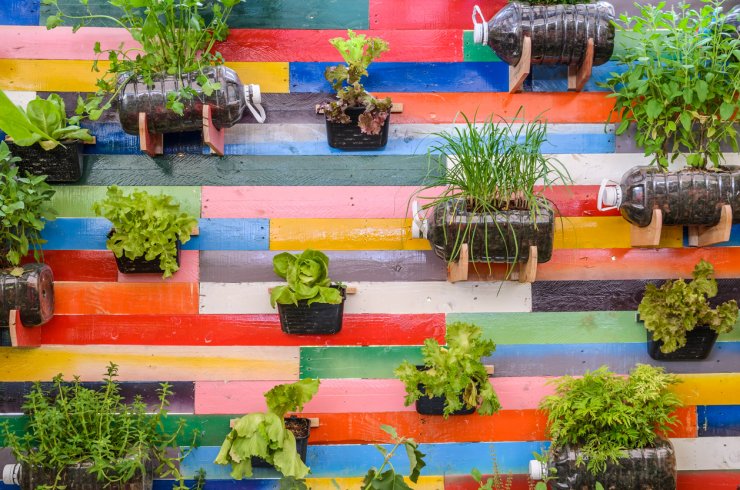
Homemade vertical herb garden.
When people picture farming or gardening systems, they usually imagine rows upon rows of greenery. Vertical greenhouse farming is a unique approach that deviates from that usual structure, as it involves vertically stacked layers instead. This method is gaining popularity among urban gardeners.
Why a Vertical Greenhouse Works
While still relatively new, vertical farming creates numerous opportunities to capitalize on space and yield. Here are key reasons why it works:
- Grows any crops year-round: Cultivating seasonal and region-specific crops has become much easier now, as you can control what kind of environment they’re growing in with your greenhouse. It creates opportunities for urban farmers to access fruits and vegetables they would have otherwise had to get exported.
- Uses much less land: Vertical farming poses fewer limitations since you can make your systems go as high as possible. In fact, you can grow crops up to 20 times the yield obtained per acre compared to open-field crops.
- Ensures safety from inclement weather: A vertical greenhouse is generally an enclosed space, so your greenery is safe from harsh climates. You can also tend to it without getting rained or snowed on.
- Induce better growth conditions: Greenhouses let you control more than the temperature and the light your plants get. For example, you can supplement carbon dioxide to boost the size and quantity of flowers.
How Gardeners Make the Most of Vertical Greenhouse
Vertical greenhouses can save plenty of space, but how do they look when put into practice? Check out these installations and understand what can be improved.
1. Install Vertical Hydroponic Towers
A tower garden can be a viable option when getting into vertical farming, as planting in these kinds of structures is straightforward. Some of these systems cost about $500 or more, but you can design and build your own.
Upcycling existing items like old vinyl fences and aquarium silicone can be a sustainable option. A tower should be able to plant around 28 crops, but the actual number can still depend on your setup’s overall height and design.
2. Adding Hanging Baskets
If your vertical greenhouse has roofing or walls, consider adding several hanging baskets. These installations can add decorative appeal to your space, especially when planting flowers and other attractive-looking greens.
If you don’t have any suitable surfaces to hang the baskets naturally on, consider installing stand-alone brackets and liners instead. Just be mindful of how you’re spacing your plants, as there needs to be an even weight distribution.
3. Encouraging Vining on Trellises
Trellises and cages are another simple installation for your greenhouse. You can also use vine crops that can climb and attach themselves to your material, saving space and ensuring plant productivity.
Try to be mindful of your vine plants’ fruit and vegetable sizes. Cucumbers and small squash are beginner-friendly as they require minimal to no support, while melons tend to slip from the vine as they ripen. You can still make heavier crops work with hammocks or slings, but it requires extra effort and materials.
4. Incorporating Tiered Shelving
Tiered shelving also falls under vertical farming, as it can help you maximize plant capacity. When installed directly onto the greenhouse walls, these crops will get the most light exposure.
If you want to limit the sunlight for certain plants, consider adding a lower and more hidden shelf. You can also reuse an old stand-alone bookshelf and face it away from the greenhouse walls.
Test Your Green Thumb with Vertical Farming
Vertical farming has evolved quite a bit over the years, and it’s only bound to improve and get more creative. Maximize your space and yield by creating your vertical greenhouse and getting quality crops.



